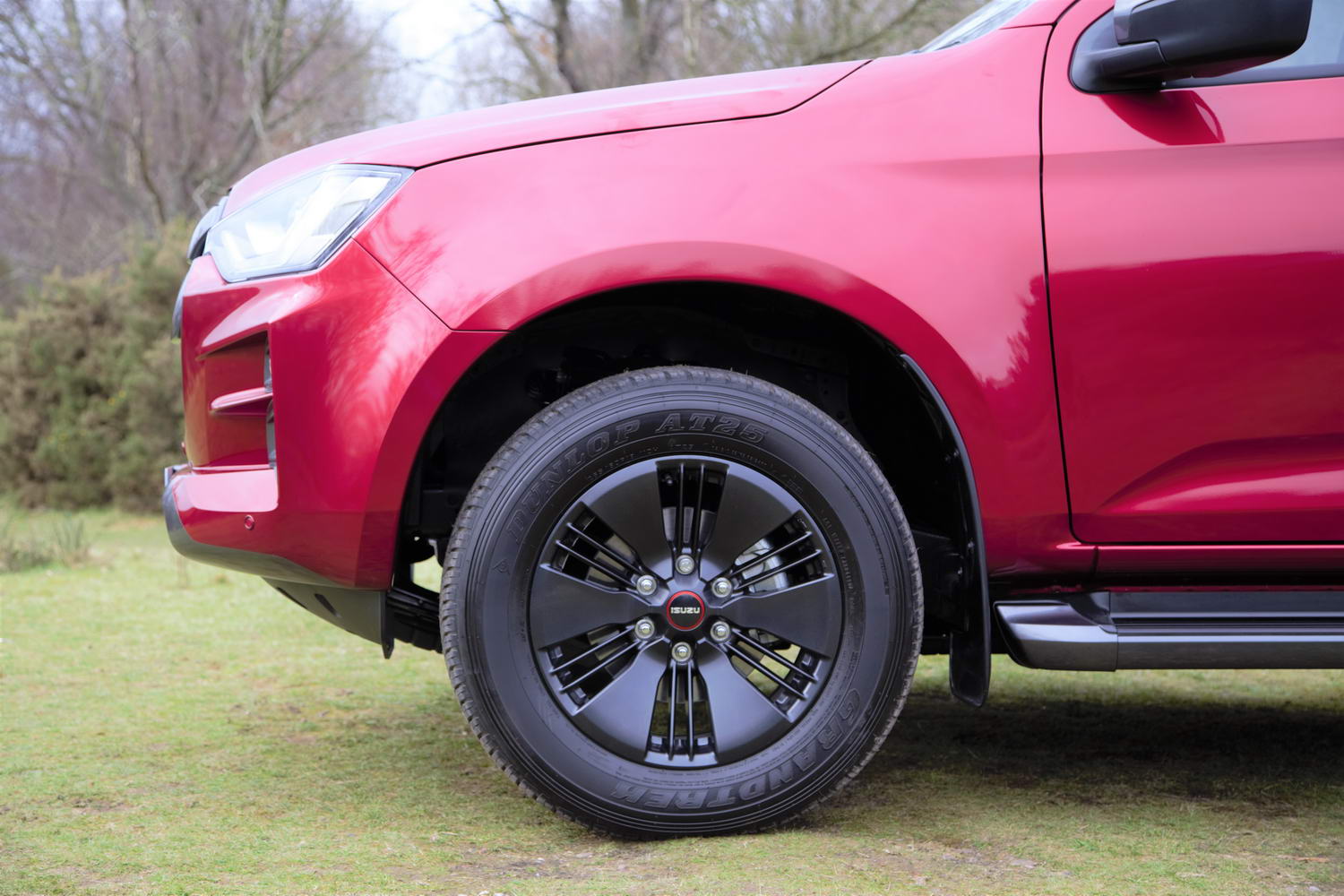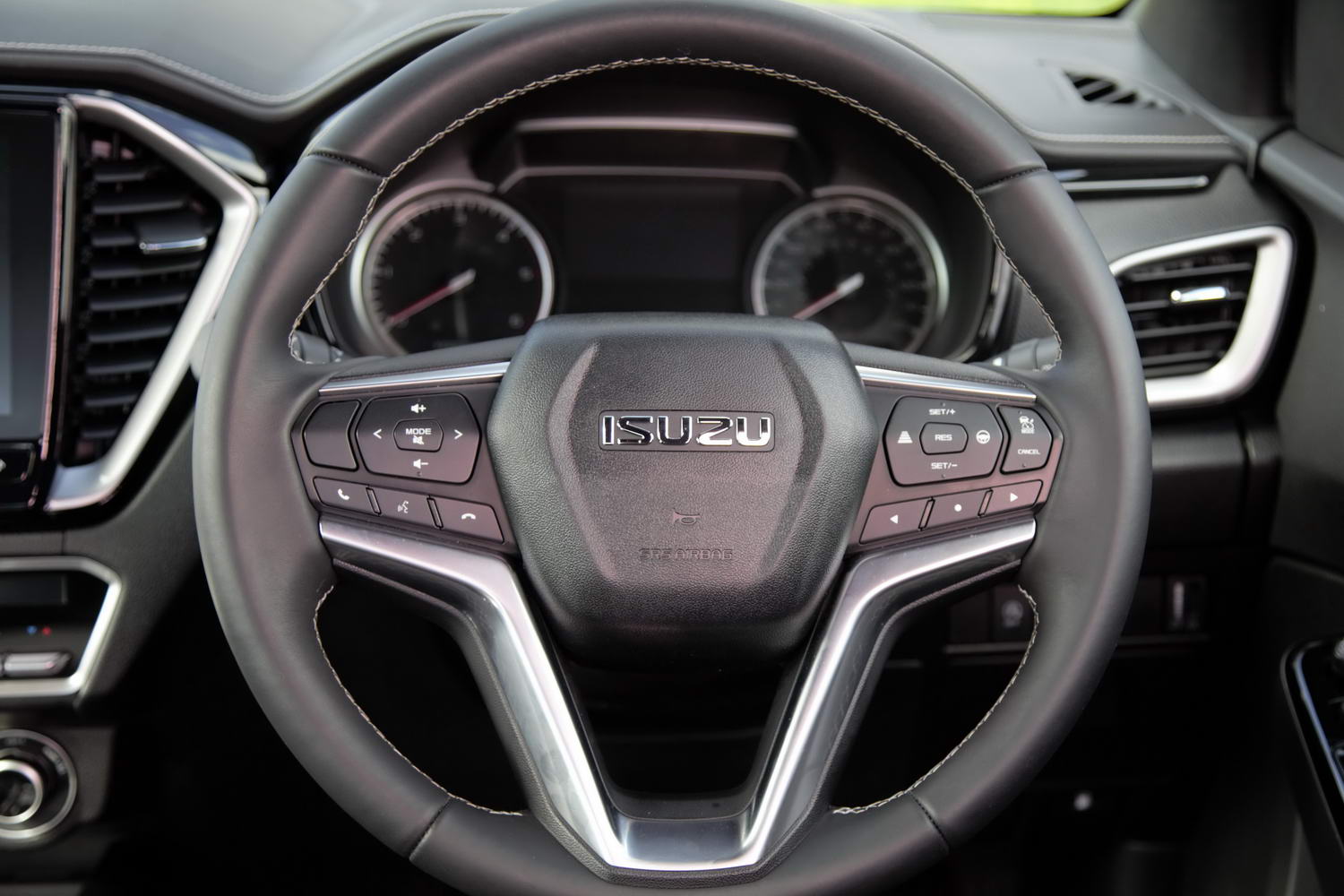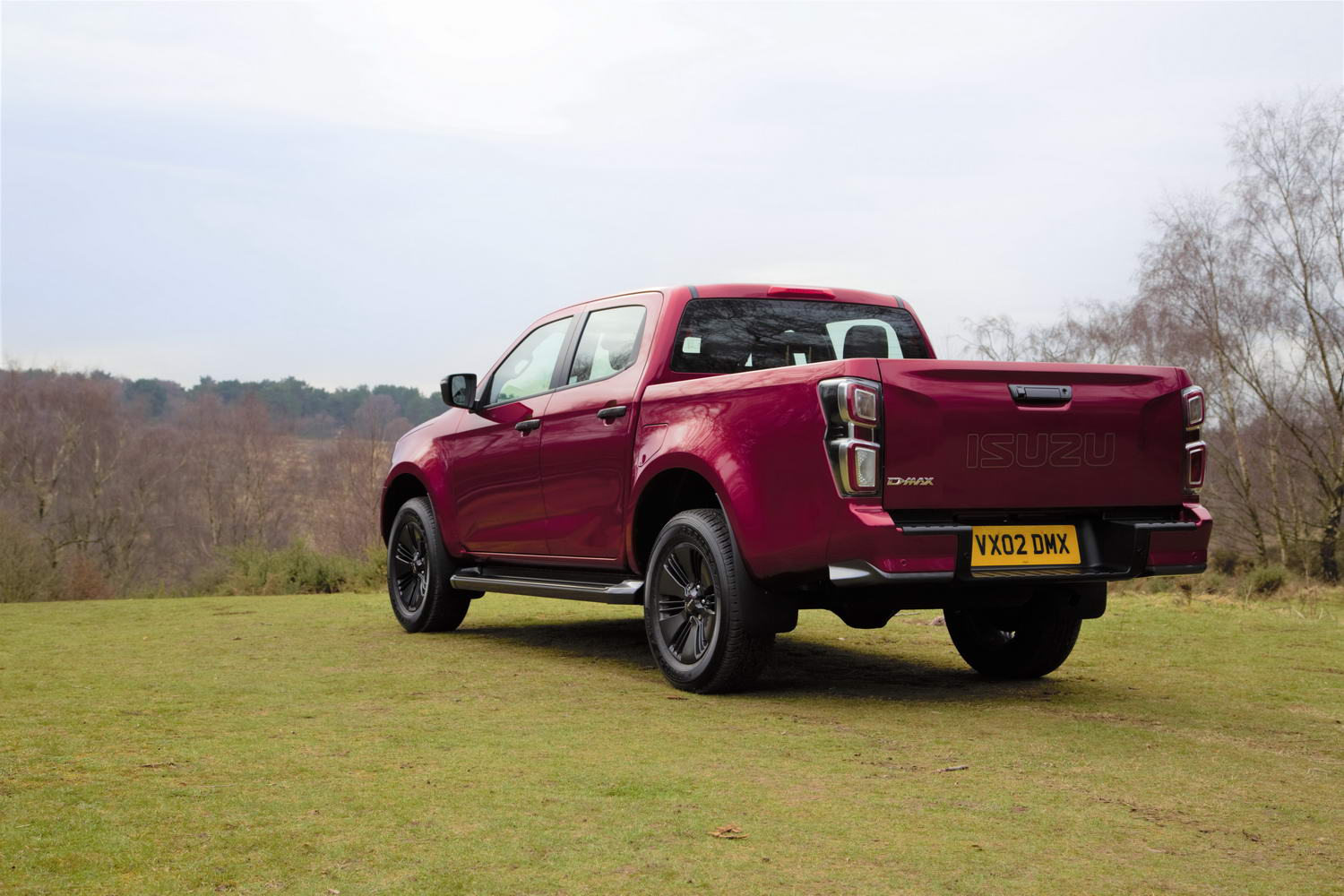Isuzu D-Max overview
The Isuzu D-Max launched in 2012 and it has always been a dependable, affordable workhorse in the one-tonne pick-up commercial vehicle sector. But in recent years, there has been an increasing trend towards buyers picking these big vehicles as both an alternative to a traditional SUV and also due to their lifestyle connotations. To that end, while Isuzu continues to offer commercial-focused entry-level versions of the new model, its second-generation D-Max has many more luxurious variants at the top of its range to tempt in private buyers, just as much as it appeals to the fleet purchaser.
It features a new chassis, braced with an extra cross-member up front for better torsional rigidity. There are also updated leaf springs at the back for improved ride comfort, while changes to the optional six-speed automatic gearbox and the chassis-cab mounts aim to make it more refined on the road. The interior has been given a huge uplift in material quality and equipment, while all models bar the basic business vehicles get a rear locking differential for the ultimate in off-road capability.
Up against a handful of big-selling pick-ups like the Toyota Hilux and Ford Ranger, can the new D-Max impress lifestyle buyers by enough of a degree to tempt them away from more established marques?
Isuzu D-Max range
Isuzu splits the Mk2 D-Max line-up into three over-arching tiers called the Business Range, the All-Purpose Range and the Adventure Range. The first of these includes a simplistic Utility trim, which sees the D-Max finished with black plastic bumpers, steel wheels and a plain cabin without much of the luxury appointments seen elsewhere in the new model. This is available in Single Cab, Extended Cab and Double Cab layouts.

The All-Purpose Range incorporates two models called the DL20 and DL40. The ‘DL’ bit stands for ‘Differential Lock’, which becomes standard-fit from this level, and the numeric simply denotes that the latter truck is far better-specified than the former. However, both All-Purpose versions have 18-inch alloy wheels and less utilitarian styling, although the DL40’s kit list builds on the DL20’s with the addition of LED lights all round on the outside, parking sensors at both ends of the vehicle plus the fitment of a reversing camera, silver side-steps to make access to the cab easier, leather upholstery, dual-zone climate control, keyless entry and go, and a seven-inch touchscreen infotainment system that supports Apple CarPlay and Android Auto. It also has bright chrome work on the exterior to make it look sharper, whereas the DL20 uses plain grey styling accoutrements.
The Adventure Range is populated by the flagship V-Cross only. This is essentially a DL40, only it has gunmetal exterior detailing – for the alloy wheels, the side steps, the radiator grille, its door handles and the folding door mirrors – as well as a larger (nine-inch) infotainment system, automatic headlight levelling, a supplementary CD player with an eight-speaker stereo, illuminated vanity mirrors in the front of the cab, an auto-dimming interior mirror and ‘V-Cross’-branded floor mats. It is squarely aimed at private buyers and, while it has all the same practical abilities as any other D-Max, it is not intended to be seen on building sites and farms as its primary function. All models in the All-Purpose and Adventure Ranges come in the Double Cab body style only, apart from the DL20, which is also available as an Extended Cab if buyers so wish. And absolutely every model in the D-Max range, from a Single Cab Utility to a fully laden V-Cross Double Cab, is powered by a 1.9-litre turbodiesel engine making 164hp and 360Nm, allied to a six-speed manual gearbox. A six-speed automatic is an option on all of the DL20, DL40 and V-Cross models.
Isuzu D-Max interior
Just before detailing the cab, the new D-Max is simultaneously 30mm shorter than its predecessor and yet also possessed of a 30mm-longer wheelbase. The B-pillar of the vehicle has been shunted forward by 25mm, resulting in larger rear doors, giving access to a more accommodating passenger compartment on the V-Cross Double Cab Automatic we tested.

A completely redesigned centre stack, featuring the nine-inch infotainment screen and classy-looking, easy-to-operate climate controls forms the spine of the dashboard, which is topped with more sumptuous materials and attractive stitching to really lift the ambience of the cabin. The seats are more comfortable and supportive than those in the old model, while the driver’s chair benefits from eight-way electrical adjustment on the top-spec variants. Furthermore, the steering wheel feels a much higher-quality item in your hands than it was before, while practicality is superb. There are no fewer than ten cupholders dotted about the cabin of the D-Max V-Cross, and huge door bins, cubby holes everywhere and a storage unit under the centre armrest mean there are plenty of places to store stuff. The infotainment system is good, if not the most cutting edge of in-car technology, but as both Apple CarPlay and Android Auto are wirelessly supported then this will not be a major issue to most owners – who will simply choose to mirror their smartphone’s interface on the Isuzu’s main screen.
There’s a tidy colour information screen in the instrument cluster, while in the back the passenger space is much improved, and the seats have more reclined backrests to further bolster comfort levels. Overall, there’s little doubt that the cabin of the D-Max Mk2 is its star showing – no other pick-up truck on the market has a superior passenger compartment, in our opinion.
Isuzu D-Max driving experience
Speed-sensitive steering is one of the main appeals of the new Isuzu D-Max, as it makes the truck much more manoeuvrable at low speeds and it weights up nicely at higher velocity. It’s also not slow steering, like the set-up in other pick-ups, and never becomes too heavy. As the main point of contact between the vehicle’s driver and the road surface, it’s much more confidence-inspiring than the old D-Max’s system.
This means you quickly build a rapport with the easy-going Isuzu, which is a far more refined and quieter vehicle to travel in than the old model. It limits wind noise and road roar at speed brilliantly, while that typical bugbear of unladen pick-ups – a nervous, fidgety ride caused by the rear leaf springs and no weight in the load bed – only really makes its presence known on the absolute worst road surfaces. For the majority of the time, the second-gen D-Max conducts itself smoothly at a variety of speeds, while its steady steering means it is not easily deflected from the driver’s intended path; this is a stable machine that’s easy to place on the road.
It is also good off-road, able to take on tough wading sections and severe inclines and descents on rubbly surfaces on road-biased tyres with effortless disdain. Indeed, the rear differential lock is almost unnecessary, only really being required for extreme conditions that most owners will be unlikely to encounter. With Hill Descent Control, and faster-switching 4H (doable on the fly from 2H) and 4L transmissions, it will be rare the D-Max driver who manages to get this vehicle stuck.
Dynamically, it’s a much finer truck than it was before, save for that engine. In this class, especially if targeting lifestyle and private buyers more than business users, a 164hp 1.9-litre turbodiesel feels undernourished. It’s also loud if revved beyond 3,000rpm and the D-Max, despite being light by pick-up standards, always feels slow and lethargic. Compared to a 204hp 2.8-litre Hilux or 213hp 2.0-litre biturbo Ranger, the D-Max is lagging behind for drivetrain refinement and performance.
Isuzu D-Max alternatives
This is the area of great opportunity for Isuzu with this generation of D-Max. As of right now, for one reason or another, the following key rivals are no longer available for sale: the Mercedes X-Class, the Nissan Navara, the Volkswagen Amarok, the Mitsubishi L200 and the Fiat Fullback. That leaves the D-Max Mk2 up against the Toyota Hilux, the Ford Ranger and the SsangYong Musso, until further notice.
Isuzu D-Max summary
With a far nicer interior and improved on-road manners, the new Isuzu D-Max preserves much of what was good about the old model and builds upon it in a few key areas to result in a likeable end product. It’s a shame the underpowered and unrefined 1.9-litre turbodiesel continues in service, but as the Isuzu is still right up there with the class best for load bed weights and towing figures – while being as imperious off-road as it ever was – then if you can live with the loudness of the engine, this truck deserves consideration.







